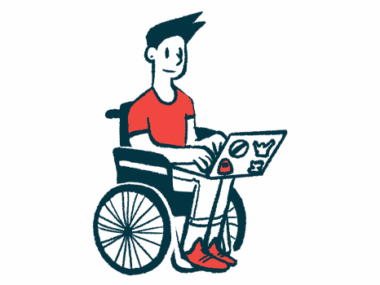Whizzing Through Summer: Altering Urination to Enable Hydration
Written by |

(Photo by Brad Dell)
I’ve always considered water a healing element. During toddlerhood, my mom connected me with an aquatic therapy center owned by a warm-hearted occupational therapist named Suzy. I swam weekly until my young adult years, when the scenery of my life evolved. I was off to college, and my therapist had moved on to a new horizon, selling her aquatic center.
Suzy became an integral part of my well-being during the most formative years of my life. She emphasized the importance of attending to all of my SMA complexities from a medical perspective while balancing it with a holistic component. The therapist helped me understand how nurturing my body could contribute to overall wellness. She guided me with immense wisdom during times of health crises and overwhelming emotional stress. In addition to stretching and exercise techniques, she taught me about mindfulness, meditation, Reiki energy work, and nutrition. To say the least, Suzy was my Yoda.
In countless ways, I benefited from being immersed in water. The buoyancy allowed me to freely stretch my arms and legs, slowing the emergence of new muscle contractures in my hips, knees, ankles, wrists, and shoulders. Holding my breath periodically under water was vital to maintaining my respiratory function. During the other six days of the week, when land’s gravity gripped hold of me, Suzy relentlessly encouraged me to embrace water in a different way: Drink it and stay hydrated!
Adequate hydration means urination. Once I was a teenager and no longer comfortable being lifted in people’s arms, using the bathroom throughout the day was a painstaking endeavor because I needed transference onto the toilet by use of my Hoyer lift. If you’re familiar with a transfer lift, you know it’s not the most compact item that can tag along in your bag of daily accessories. I didn’t want to urinate because transferring was complicated. As a female in a sitting position, straight catheterization proved tricky and uncomfortable for my mind, body, and urethra (contrary to the pesky, uneducated notion that people with SMA can’t feel anything below their waist). I didn’t have the strength to contort my body into different positions, nor did I wish for caregivers to go spelunking into the crevices of my dignity each time I had to pee.
As a result, I lived in a state of chronic dehydration throughout the better part of my teenage years. Any fluids I drank in the span of a day were pushed as a reminder from my parents, but it wasn’t anywhere near the optimal amount that my body needed to function well. That wreaked havoc on my body in painful ways. Kidney stones formed like confetti within my urinary system. My GI tract moved as swiftly as a metro traffic jam. I wasn’t flushing toxins from my body, and it was more challenging to clear thick respiratory secretions.
My parents felt the need to explore options to help me gain independence and ease with urination. I was eventually referred to a fantastic urologist who had experience with other young adult patients facing a similar situation, and we discussed multiple options. He recommended a Mitrofanoff appendicovesicostomy, a procedure where my appendix would be removed. Upon removal, surgeons would construct a conduit by attaching one end of my newly freed appendix to the top of my bladder, and the other end to an open stoma (replacing my belly button). Utilizing catheters, my bladder could be emptied throughout the day, eliminating the need to transfer or have a catheter bag attached to me.
Because the surgery altered my bladder and involved reconstruction, the process was somewhat challenging and the road to healing traversed a few months of my life. Understanding the ins and outs of stoma care and clean intermittent catheterization through my unusual spout was a learning curve. Not only did I have a new plumbing system and instruction manual to familiarize myself with, but I needed to be able to teach caregivers about it.
This week, my annual urinary tract ultrasound and lab checkup were performed, and I’ve been thinking about how this intervention has profoundly affected my overall health and quality of life. For the past 13 years now, I’ve devoted myself to drinking plenty of water each day. I can rehydrate without worry during the heat of summer. I’m sick less often and kidney stones are a rare occurrence.
I haven’t chatted with Suzy in many years, but her wisdom is imprinted on my life; her philosophies of health and wellness have influenced my decisions as an adult. SMA has thrust many medical debacles upon me, but I strive to recognize the things I can control. I chose to gain urinary independence and, more importantly, take care of my body.
***
Note: SMA News Today is strictly a news and information website about the disease. It does not provide medical advice, diagnosis, or treatment. This content is not intended to be a substitute for professional medical advice, diagnosis, or treatment. Always seek the advice of your physician or other qualified health provider with any questions you may have regarding a medical condition. Never disregard professional medical advice or delay in seeking it because of something you have read on this website. The opinions expressed in this column are not those of SMA News Today, or its parent company, Bionews Services, and are intended to spark discussion about issues pertaining to spinal muscular atrophy.







Leave a comment
Fill in the required fields to post. Your email address will not be published.